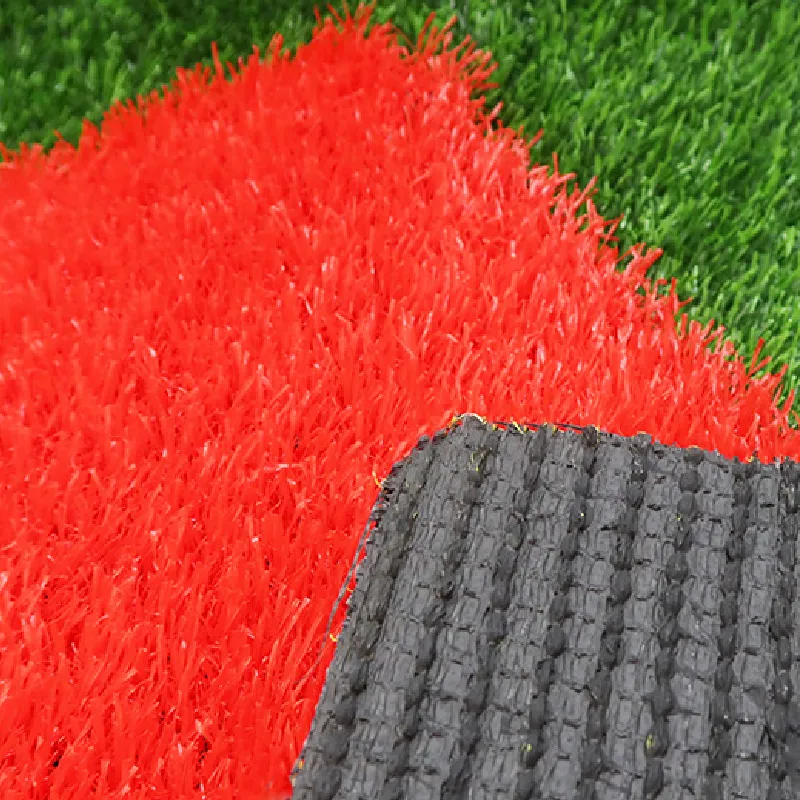
- Afrikaans
- Arabic
- Belarusian
- Bengali
- Czech
- Danish
- Dutch
- English
- Esperanto
- Estonian
- Finnish
- French
- German
- Greek
- Hindi
- Hungarian
- Icelandic
- Indonesian
- irish
- Italian
- Japanese
- kazakh
- Rwandese
- Korean
- Kyrgyz
- Lao
- Latin
- Latvian
- Malay
- Mongolian
- Myanmar
- Norwegian
- Persian
- Polish
- Portuguese
- Romanian
- Russian
- Serbian
- Spanish
- Swedish
- Tagalog
- Tajik
- Thai
- Turkish
- Turkmen
- Ukrainian
- Urdu
- Uighur
- Uzbek
- Vietnamese
artificial grass football stadium
Dec . 05, 2024 04:55 Back to list
The Rise of Artificial Grass in Football Stadiums
In recent years, the world of football has undergone significant changes, particularly in the infrastructure that supports the sport. One of the most remarkable developments has been the increasing use of artificial grass in football stadiums. This shift has been driven by a variety of factors ranging from economic considerations to environmental sustainability, as well as the demands of players and fans alike.
The Evolution of Playing Surfaces
Historically, natural grass has been the traditional surface for football pitches. However, maintaining a pristine natural turf can be an arduous task. Factors such as weather conditions, usage frequency, and the vital need for a consistent playing surface can lead to challenges that many stadiums struggle to overcome. Rain-soaked pitches can render matches unplayable, while drought conditions can lead to dry, cracked surfaces. In contrast, artificial grass offers a level of consistency that natural turf simply cannot match.
Artificial surfaces have evolved significantly since their inception, moving from the first-generation materials that were often criticized for being too hard and abrasive. Today's advanced synthetic grasses are designed to mimic the look and feel of natural grass while providing enhanced durability and performance. These modern artificial surfaces are engineered with varying pile heights and densities to cater to different playing styles and conditions.
Economic Benefits
One of the most appealing aspects of artificial grass is its economic viability. While the initial investment for installing synthetic turf can be high, the long-term savings are substantial. Artificial grass requires significantly less maintenance than natural grass, which translates to reduced labor and water costs. In regions where water scarcity is a pressing concern, such as parts of California and the Middle East, the ability to conserve water resources is a crucial factor. Furthermore, artificial turf can withstand heavy use and inclement weather, allowing stadiums to host a wider variety of events beyond just football matches. This includes rugby games, concerts, and community events, all of which provide additional revenue streams.
Player Welfare and Performance
artificial grass football stadium

Player safety is an essential consideration when it comes to playing surfaces, and artificial grass has made strides in this area as well. Modern synthetic fields are designed with shock-absorbing qualities that reduce the risk of injuries caused by falls and impacts. With advancements in technology, artificial grass now includes infill materials that provide flexibility and support, allowing players to change direction quickly without compromising their safety. Many professional athletes have expressed a preference for these high-quality surfaces, noting their consistency and superior playing characteristics.
Environmental Impact
The environmental impact of football stadiums is increasingly under scrutiny. One concern regarding traditional grass pitches is the use of pesticides, herbicides, and fertilizers, which can have detrimental effects on local ecosystems. Artificial grass eliminates much of this chemical use, thereby contributing to a healthier environment. Furthermore, installations of synthetic turf are typically made from recyclable materials, and many companies are now focusing on producing eco-friendly alternatives that meet sustainability standards.
Challenges and Controversies
Despite the numerous benefits of artificial grass, there are challenges and controversies that come with its adoption. Critics often cite concerns regarding the heat retention of synthetic fields, which can make playing conditions uncomfortable during hot weather. Additionally, the long-term effects of using plastic components in artificial turf remain a topic of debate, particularly concerning the microplastics that can enter the wider environment.
Conclusion
Artificial grass in football stadiums marks a significant advancement in how the sport is played and experienced. While challenges still exist, the benefits—ranging from economic savings and player safety to environmental sustainability—make artificial turf an attractive option for modern sporting facilities. As technology continues to improve, it’s likely that we will see even more stadiums embrace this innovative material, providing both players and fans with a consistent and enjoyable experience for years to come. The future of football might just be green, and it’s time to embrace it.
-
The Benefits of Artificial Turf for Indoors
NewsJul.15,2025
-
How Artificial Grass Suppliers Ensure Quality Products
NewsJul.15,2025
-
Artificial Grass and Pets: A Space for Relaxation
NewsJul.08,2025
-
Balcony & Outdoor Decoration with Artificial Grass
NewsJul.08,2025
-
Best Indoor Artificial Grass for Home
NewsJul.07,2025
-
Best Pet Turf for Dogs: Safe & Durable Artificial Grass Options
NewsJul.07,2025
Products categories









